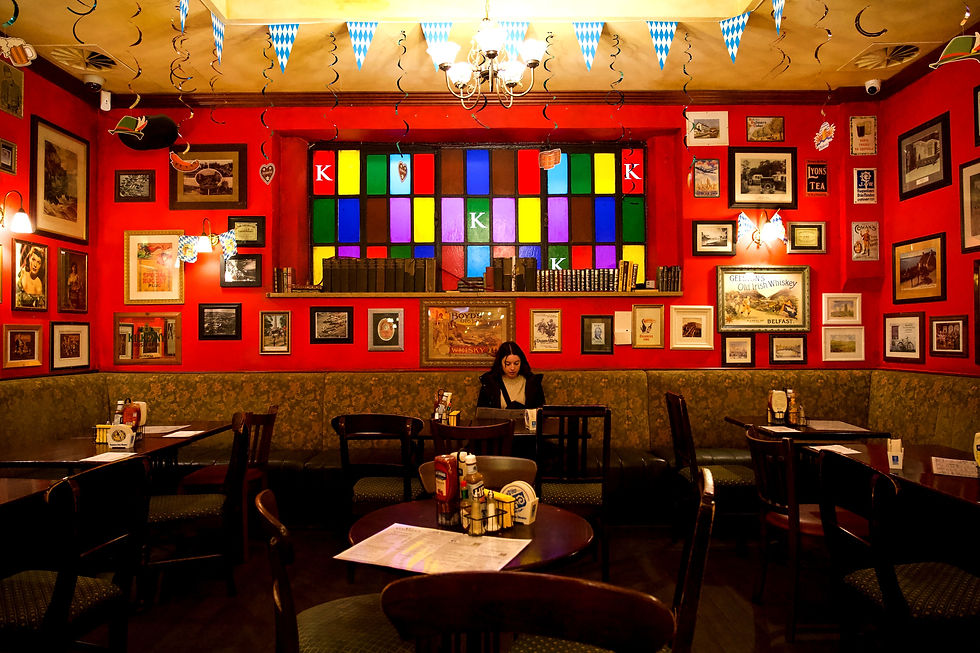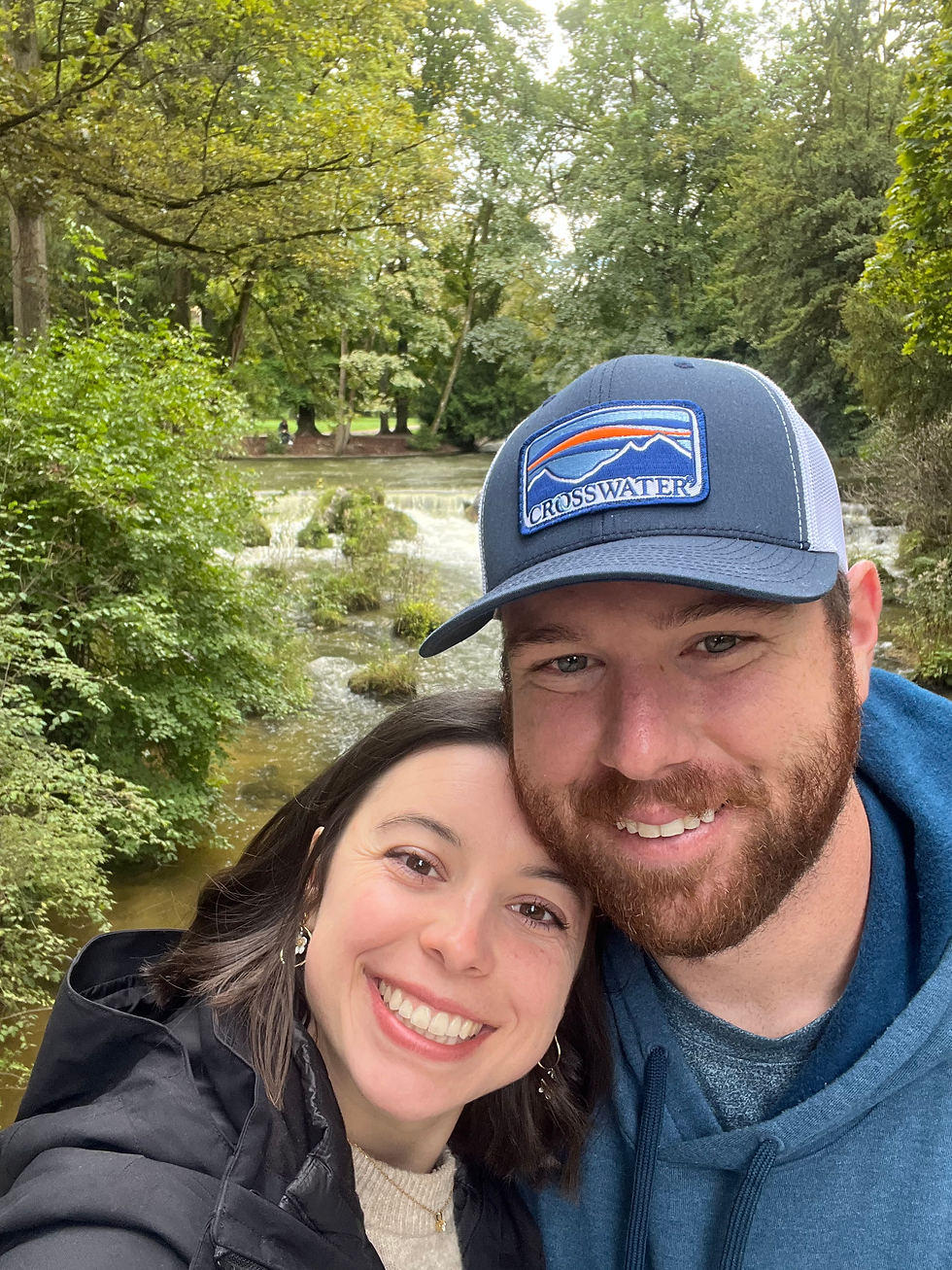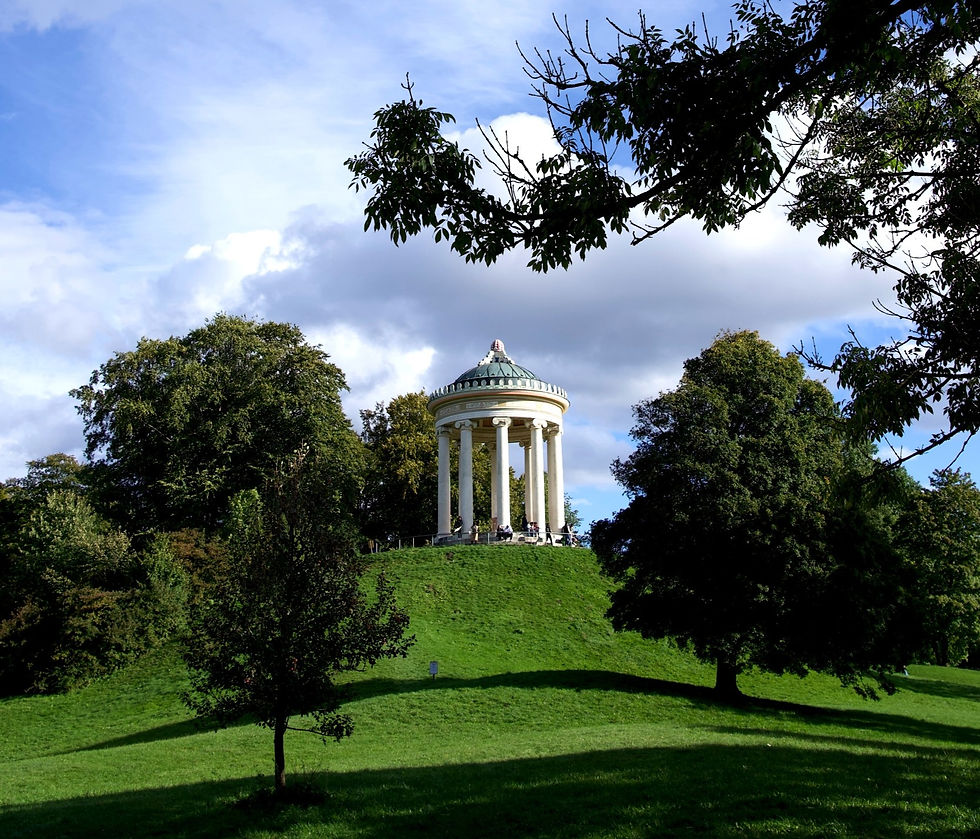Exploring Munich
- Tom Aijian
- Oct 2, 2022
- 3 min read
After an eventful two days, we elected for a slower morning and much-needed rest before exploring the city itself. We took a train into the city center at Marienplatz which lets out near the Neues Rathaus— one of the most breathtakingly ornate buildings in Europe.
Before embracing our identity as tourists, we found a meal at an underground pub called Kennedy’s. Leather-bound books and framed photos line the walls. Your interest was constantly piqued regardless of where you looked, but not in a TGI Friday’s kind of way. I could only sit for a minute before getting up to inspect some other corner of the backroom we dined in.

The food was as good as it was hearty and the staff was as kind as they were Irish. From there, we passed under the Sendlinger Tor archway into an idyllic cobblestone street of modern shops beneath classical buildings. I remarked to Savannah, “At one point this was probably the house of some aristocrat who had peasants beheaded in the streets for their treasons…now it’s a Starbucks.”

We carried on toward Theatine Church just beyond Max-Joseph Plaza. Outside and up close, the Theatine Church can only be described as strikingly yellow. In contrast, the inside is pearly, polished, marbleous, and marvelous. The level of detail carved into the marble is nothing short of gobsmacking. Every centimeter you turn your head reconfirms the architectural mastery of its design. Pictures can’t do it the justice your eyes can. We lit a candle, made the rounds, then took our leave.
In heading to Munich’s largest city park, we cut through the gardens of the Residenz Palace which once housed dukes, electors, and kings until 1918. Couples strolled hand in hand, friends gathered on benches, and individuals sat in the company of their books and newspapers. Not far from there, a small brook flowed next to the city street where taxis were uncharacteristically quiet and cyclists moved about casually. In that moment I knew something felt different about this big city, but wasn’t ready to define it. We followed the babbling stream into a park called Englischer Garten where bistros hide amongst the trees and city surfers famously ride the frigid artificial waves of the Eisbach river. As we marched on we noticed an anomaly. There wasn’t a single shred of litter to be found—made even stranger by a complete absence of trash cans. The clouds parted and for the first time since
we left Colorado we felt the warmth of the sun.

Mothers on bicycles pedaled past pedestrians, their children in tow. Dogs played with one another freely and off-leash. Coworkers ended their days with a leisurely stroll and a friendly drink. Students flipped through the pages of their textbooks, trading a library for the quiet comfort of the open grass. Most everyone smiled by sheer virtue of the fact that they didn’t have a good enough reason not to. They were genuinely happy and it showed. As Americans, we often hear about the pace of European society and the harmony they’ve achieved between affording a lifestyle and actually enjoying it.

Europeans have perfected the art of work-life balance and are better off for it. The 9 to 5 pride we preach in contrast to their way of life is an empty thing. Maybe I’m not one to talk, but as we rounded the Chinese Tower in the heart of Englischer Garten, I could finally define why Munich felt so different. It was a large city that I actually liked. Public transportation was phenomenal and the streets seemed to lack traffic. It was clean and kind and cultural. No place is perfect though. The museums are closed on Mondays.

















Comments